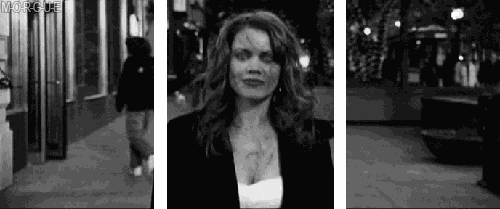Wednesday, March 9, 2016
Women of Horror Roundtable
10:52 AM | Posted by
Not Now...Mommy's Reading
Women of Horror Roundtable
One female author in horror is a rarity, but three at one time? It’s almost unheard of. So you can imagine my excitement when I learned that Sephera Giron and Catherine Cavendish were willing to join me for a roundtable discussion. I had so many questions, I almost didn’t know where to begin!
Elena: Let's start with an easy one. How did you get into horror?

Seph: The short version: I read The Shining when it came out and when I closed the book, I said "I want to scare other people like I was just scared when I grow up!"
Cat: Difficult to remember so many years on, but I always liked to make up stories in my head and act them out so, from the the ripe old age of nine (or so), it seemed a logical progression to start writing them down. Writing horror came later - after reading 'The Monkey's Paw', by W.W. Jacobs, at school. Soon after that I wrote my first ghost story. It was terrible. I learned.
Seph: I should add that I've been writing since I could hold a pencil. My first book of "poems and short stories" was written in grade one, I still have it somewhere. My first poems were about squirrels being hit by cars.
I wrote my first few novels and screenplays (many still unpublished) on manual typewriters.
Elena: It’s interesting that you both started in grade school. In third grade, I wrote my first horror story...about a quadriplegic orphan-girl who drowned in a pool. The impressive 4 page manuscript managed to win first prize in a class competition. All I have to say is that the other entries must have been terrible.
Seph: I was wondering if ages might be interesting. Is it easier for young ladies to get published in horror now than when I was starting out? My first novels were published when I was in my early thirties. I am now 53. I've gone through two marriages and a few children as a writer and woman. My first novel was published after first marriage was over. IT was easy to be established as a pro writer with second husband, I didn't have that "little hobby" stigma when I met him.
Cat: Agewise, I'm 61, first started writing when I was around 9 years old and saved up to buy my very own Empire Smith Corona portable typewriter (I even sold my dolls' house and put the money towards it!). I've dabbled in all sorts of genres, but always had trouble getting published - until I switched to ghostly horror and spread my wings across the pond to my first digital-first publisher in 2011. Then the 2013 Gothic Anthology competition brought me to Samhain, with my winning entry - Linden Manor.
Elena: I’m 37, married with two children, and work in software. When I was 32 I decided to jot down the novel I’d had in my head since I was a teenager. Six months later, the MS was finished, and I thought it would be fun to send it out to a handful of publishers. I’m humbled to say Samhain (I’d discovered them on duotrope.com) picked me up immediately. If it weren’t for the internet, though, I seriously doubt I would have pursued publication at all. There's no way I'd have the patience to lug a lengthy MS to the post office.
Seph: I laugh when I see people freaking out about not hearing from a publisher in a week or a month or even six months. I've waited YEARS for answers. Years waiting from houses where you weren't allowed to submit anywhere else while you were waiting! Don (our editor) used to take about a year when he was at Leisure. I had friends who wouldn't hear from him in three or four. My longest wait that actually received an answer by SASE was ten years.
Elena: I’m one of the people who freaks out! I LOVE the story about waiting ten years to hear back from a publisher, by the way. And I've got a similar story of my own. About a year after Donor was published, I woke up to a random email in my inbox from some other publisher (I can't even remember the name), thanking me for my submission, but Donor wasn't for them. Now that I know the wait can take up to ten years, though, I’ll be sure to check for more rejections in my inbox—maybe I’ll even get another acceptance or two. ;)
Cat: Well I can certainly remember typing up my handwritten manuscript on my portable typewriter, then - wonder of wonder - a Brother electronic. In each instance, the cost of ribbons, carbon paper (anyone else remember that?), the paper itself and the sheer time spent...Then of course there was always the fear that the house would burn down and your massive collection of paper would go up in smoke, never to be seen again. Judith Krantz said in an interview once (sometime in the later Seventies) that she used to keep her original manuscript in the freezer - logic dictating that it would be the last thing to burn in the event of a house fire!. I thought that an excellent idea and immediately copied it. These days, of course, we copy everything onto a tiny little stick - lots of tiny little sticks if we are paranoid.
Then there was the cost of postage and, as Elena said, trudging down to the Post Office with the latest pride and joy, plus two very large envelopes or brown paper, sellotape and scissors (you had to send return postage. Cost an absolute fortune.) Oh, did I mention that if you made a typing error on your manuscript, you had to type the whole page again - sometimes the entire chapter if it didn't look right. Precious minutes were spent lining up the page in the machine, measuring an inch from the bottom of the paper and inserting a faint pencil mark which you would erase later (this ensured you didn't accidentally type right to the end of the sheet.) Thank goodness those days are past. Oh, I forgot to mention, all the query letters had to be individually typed as well - and mailed off with return postage and envelope. Cost a fortune!
From typewriters, I thought all my Christmases had rolled into one when I bought an Amstrad word processor in around 1990. It came with a daisy wheel printer and I blogged about this some years ago.
http://www.catherinecavendish.com/2011/06/of-daisywheels-anchovy-and-claptrap.html
http://www.catherinecavendish.com/2011/06/of-daisywheels-anchovy-and-claptrap.html
Lots of fun there.
Also, we not only vary in age but in nationality. If I'm not mistaken we have on board here one Canadian, one American and a Brit (me)? Maybe there is an area to explore there. Do our experiences differ in any way because of cultural/national differences, or are we (as I suspect) pretty much in one massive melting pot?
Seph: I live in Canada. When I first started out, I couldn't get my own books shipped to Canada because they were censored. We had very strict porn laws prior to the two thousands. It took three times just to get a check for a story because they would ban the envelope just because it was from Blue Blood magazine. I think the only real difference in my work compared to Americans is that I never think about having a gun as a go-to solution.
Elena: Initially, I was going to say that living in the US hasn't had an effect on my writing, but then I remembered an exchange in my latest novel, Bait:
“A lawyer isn’t going to get you out of murder.”
Upon hearing this, Paul crossed his arms and narrowed his eyes at Sam with a look of profound disappointment. “What you just said is practically un-American.”
And I realized that—culturally—my characters and the universe they occupy are very much Post-OJ-Simpson New World. What better place for two vampires to operate with impunity? People get away with murder in this country all the time, and people go missing even more often than that.
 Cat: I was fascinated to hear about Canada's tough censorship laws! Can't say we've had anything quite as rigid as that over in the UK for a long time. I mean, you can buy porn at your local newsagent here - providing you can reach the top shelf! The UK was the country of the page 3 topless model (always female, of course) but that has largely gone now. These days we have more female editors and I think that helps! There are strong voices who have long argued in favour of a ban on state censorship and, gradually, subjects that would never have been shown on TV before the 'watershed' are getting an airing in prime time. The popular soap operas all feature at least one gay or Lesbian or transgender person and/or couple. They are shown embracing and kissing - and all before 8p.m.! That would have been unheard of thirty years ago (or even less). Subjects such as abortion, rape, and abuse are also regularly aired on TV. Yes, I think we can safely say that many (if not all) the barriers are coming down. Largely I think the hitherto taboo subjects are being intelligently handled. The producers don't always get it right but it does open dialogue on some difficult issues.
Cat: I was fascinated to hear about Canada's tough censorship laws! Can't say we've had anything quite as rigid as that over in the UK for a long time. I mean, you can buy porn at your local newsagent here - providing you can reach the top shelf! The UK was the country of the page 3 topless model (always female, of course) but that has largely gone now. These days we have more female editors and I think that helps! There are strong voices who have long argued in favour of a ban on state censorship and, gradually, subjects that would never have been shown on TV before the 'watershed' are getting an airing in prime time. The popular soap operas all feature at least one gay or Lesbian or transgender person and/or couple. They are shown embracing and kissing - and all before 8p.m.! That would have been unheard of thirty years ago (or even less). Subjects such as abortion, rape, and abuse are also regularly aired on TV. Yes, I think we can safely say that many (if not all) the barriers are coming down. Largely I think the hitherto taboo subjects are being intelligently handled. The producers don't always get it right but it does open dialogue on some difficult issues.
Seph: What are your views on censorship? Do you find yourself censoring yourself when you write? How far is too far?
Cat: There are precious few taboos these days, although some new ones have emerged. A quick glance at some of the old horror stories of Dennis Wheatley (for example) would send today's modern editor into a fit of apoplexy and liberal use of the censoring red pen. The reason? The blatant white supremacist racism that went largely unnoticed and was accepted at the time Wheatley was writing. It seems incredible now in our more enlightened age!
I would never mock anyone's religion, race, colour, creed or sexual orientation so I suppose you could say that's my self-censorship button, but it never occurs to me anyway, so I don't have to draw back from any brink here. I don't write erotic horror, but that's not because I don't think it should be written. I just don't think I'm the best person to write it. In A Penny Saved, Sephera writes it far better than any attempt of mine! I have dealt with incest (The Pendle Curse) and child abuse (Dark Avenging Angel). In the latter case, I would draw back from any attempt to titillate or trivialise such brutal behaviour.
Elena: I guess my definition of “too far” is whether the content makes me uncomfortable. For instance, I have a pet peeve about horror novels/movies that disproportionately portray women as victims. So I make sure the body count is evenly distributed across genders when it comes to my own work. And even my villains draw the line when it comes to things that really make me squirm, such as hurting children. Does this take away from the fear factor? Possibly. But I spend a lot of time with my characters during the course of writing a novel—and there's no way I could spend all that time with people I didn’t like.
Seph: Our censorship laws have greatly changed over the years. These days pretty much anything goes. As for self-censorship, I've never stopped myself from writing anything. I don't think there is "too far" but I love splatterpunk and other extreme horror so I may be different than some other writers.
Elena: Speaking of sex and violence… "Erotic Horror" and "Paranormal Romance" both seem to have a great deal in common. Except the former is clearly marketed to men, the latter marketed almost exclusively to women. What would you say is the difference between the two?
Seph: I don't agree that erotic horror is geared towards men. The word erotic is for women. They are marketing labels. I would say very loosely that paranormal romance has a happy ending. Erotic horror can end in anyway it wants.
Cat: In my opinion, the two are frequently poles apart. Many paranormal romances feature delightful monsters - very often alpha males who transform into vampires who don't really want to drink your blood and if they do, they turn the experience into a deeply sensual and erotic affair. Or every full moon they change into the most gorgeous looking wolf with a thick shiny coat you cannot help but bury your face in. There is almost always a happy ending - or a 'happy for now'. Of course, there have been horror romances too but those don't tend to end happily. Anne Rice has accomplished this on a number of occasions, as have others. But then horror isn't always about the paranormal either. It can just as easily concern events in the normal world around us. Brian Kirk's recently published, 'We Are Monsters' concerns all-too credible horror in a mental institution and there are many other fine examples.
Elena: That’s fascinating. I admit to not having much experience in the two genres, having only read my first “dirty” novel three years ago...at the tender age of 34. And now that I’m past blushing every time I turn the page, I’ll definitely be checking out more works in both the paranormal romance and erotic horror genres. If anyone has a good recommendation for me, I’m all ears.
Cat: A lot of women I know shudder when I tell them I write horror. They immediately think of lashings of fake blood, dismembered arms and legs flying about all over the place and zombies staggering around like extras from 'Thriller'. As women writers of horror ourselves, how can we convince them that reading scary stories doesn't have to be gross - indeed, when well written, it should be grippingly suspenseful good fun?
My take on this is to look for common ground. What sort of books do they enjoy? A number of my female friends enjoy crime and one of the things they most enjoy about immersing themselves in a murder mystery is trying to solve ‘’whodunnit’ before the sleuth. They also enjoy the twists, turns and red herrings of a good crime novel – and the twist at the end. These same elements can be found in many horror stories. They don’t have to be saturated with blood, gore and flying body parts. Frequently, my stories involve a mystery, clues - and always a twist in the tale.
My take on this is to look for common ground. What sort of books do they enjoy? A number of my female friends enjoy crime and one of the things they most enjoy about immersing themselves in a murder mystery is trying to solve ‘’whodunnit’ before the sleuth. They also enjoy the twists, turns and red herrings of a good crime novel – and the twist at the end. These same elements can be found in many horror stories. They don’t have to be saturated with blood, gore and flying body parts. Frequently, my stories involve a mystery, clues - and always a twist in the tale.
Seph: Squeamish readers don't need to worry that every horror novels is filled with spraying blood and grisly decapitations. There are many types of horror stories, many levels to the genre, if you indeed consider horror a genre.
I would venture to say that all great stories in any genre have both horror and romance in them.
 A story such as The Portrait of Dorian Grey isn't bloody and gross and in fact, many of the early classics leave much to the imagination. Poe's The Tell-Tale Heart was one of the first stories that disturbed me and it was the infernal beating of that damnable heart that made me mad, not any blood and gore.
A story such as The Portrait of Dorian Grey isn't bloody and gross and in fact, many of the early classics leave much to the imagination. Poe's The Tell-Tale Heart was one of the first stories that disturbed me and it was the infernal beating of that damnable heart that made me mad, not any blood and gore.
Horror stories can be subtle and creepy, while others are full on slaughter-fests. Variety is the slice of life and horror fans have many cuts from which to choose!
Elena: This may come as a surprise, but I find gore just as much of a turnoff as the next person. I also can't stand romance novels with too much sex, or action movies with too many explosions. None of these elements are bad per say, but they next appropriate context to be effective. They need to be driving a plot. When used without purpose, sex becomes sleazy, violence becomes gory, and explosions become…well, boring.
Like Catherine said, *good* horror—just like any other genre—needs an engaging storyline. Plots are like puzzles; something both the protagonist and audience must solve before it's too late.Elena: This may come as a surprise, but I find gore just as much of a turnoff as the next person. I also can't stand romance novels with too much sex, or action movies with too many explosions. None of these elements are bad per say, but they next appropriate context to be effective. They need to be driving a plot. When used without purpose, sex becomes sleazy, violence becomes gory, and explosions become…well, boring.
One final question to wrap up the discussion: What does a kick-ass female horror author do for Halloween?
Cat: As my broomstick is currently out of commission, hopefully I'll be watching some lovely old black and white horror films like 'The Haunting' (the original film, based on Shirley Jackson's 'The Haunting of Hill House') and 'Night of the Demon'. Mr C and I enjoy a good, healthy, wholesome scare - and cocktails. Vampire Juice anyone? Or how about a Corpse Reviver?
Seph: As a mom, I spent many a Halloween trick-or-treating. The past few years, the kids are grown and I live in an apartment by myself so I don't get to scare the kids, any kids anymore. I love going to Halloween parties but so far I've not been invited to any yet this year so I'll likely just watch some scary movies on TV and do some witchy stuff.
Elena: Yeah, this year I’m doing the “mom” thing myself. After I finish trick-or-treating with the kids (and levying a hefty candy tax), my husband and I will probably curl up on the sofa to watch Arsenic and Old Lace, my favorite Halloween movie of all time.
Catherine, Sephera, thank you so much for being a part of this discussion! About Elena Hearty:
About Elena Hearty:Elena Hearty is the author of Donor (Samhain 2011) and Bait (Samhain 2016). She's married, has two children, and works full time as a software engineer. You can connect with Elena here: Elena Hearty
About Sephera Giron:
 Sephora Giron is the author of A Penny Saved (Samhain 2015), Experiments in Terror (Samhain 2015), Flesh Failure (Samhain 2014), Captured Souls (Samhain 2015), Mistress of the Dark (Leisure), The Birds and the Bees (Leisure) and House of Pain (Leisure). Sephera is also a professional editor and is always looking for new clients! You can connect with Sephera here: Sephera Giron|Twitter|YouTube|Instagram|Samhain
Sephora Giron is the author of A Penny Saved (Samhain 2015), Experiments in Terror (Samhain 2015), Flesh Failure (Samhain 2014), Captured Souls (Samhain 2015), Mistress of the Dark (Leisure), The Birds and the Bees (Leisure) and House of Pain (Leisure). Sephera is also a professional editor and is always looking for new clients! You can connect with Sephera here: Sephera Giron|Twitter|YouTube|Instagram|Samhain
About Catherine Cavendish:
Following a varied career in sales, advertising and career guidance, Cat is now the full-time author of a number of paranormal, ghostly and Gothic horror novels, novellas and short stories. She was the 2013 joint winner of the Samhain Gothic Horror Anthology Competition, with Linden Manor, which features in the anthology What Waits in the Shadows. Her novels, The Pendle Curse and Saving Grace Devine and latest novella – Dark Avenging Angel - are also published by Samhain. Her next novel – The Devil’s Serenade – will be released by Samhain in April 2016.
Following a varied career in sales, advertising and career guidance, Cat is now the full-time author of a number of paranormal, ghostly and Gothic horror novels, novellas and short stories. She was the 2013 joint winner of the Samhain Gothic Horror Anthology Competition, with Linden Manor, which features in the anthology What Waits in the Shadows. Her novels, The Pendle Curse and Saving Grace Devine and latest novella – Dark Avenging Angel - are also published by Samhain. Her next novel – The Devil’s Serenade – will be released by Samhain in April 2016.
Subscribe to:
Post Comments (Atom)
Our Rating System


















0 comments:
Post a Comment